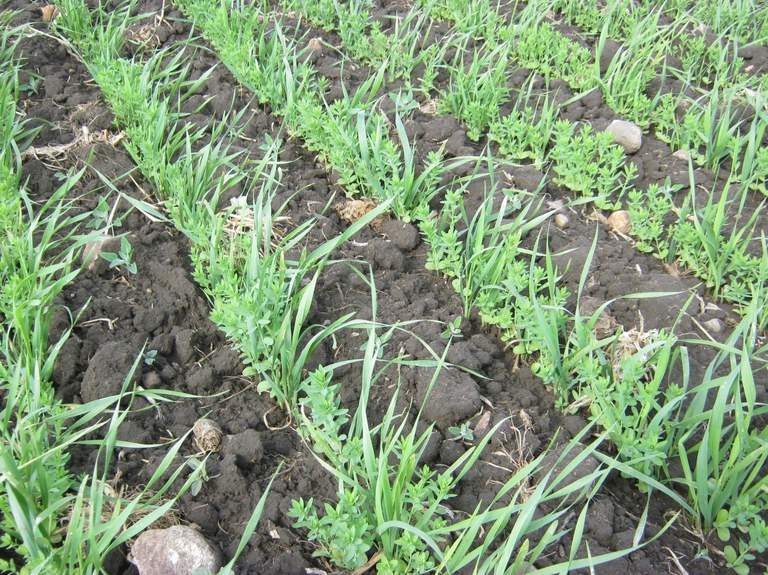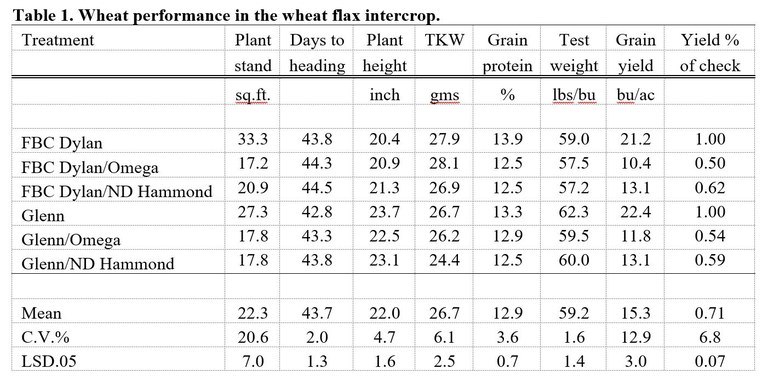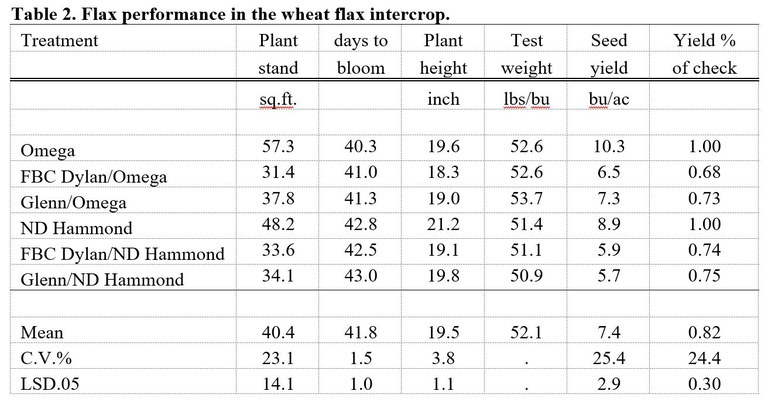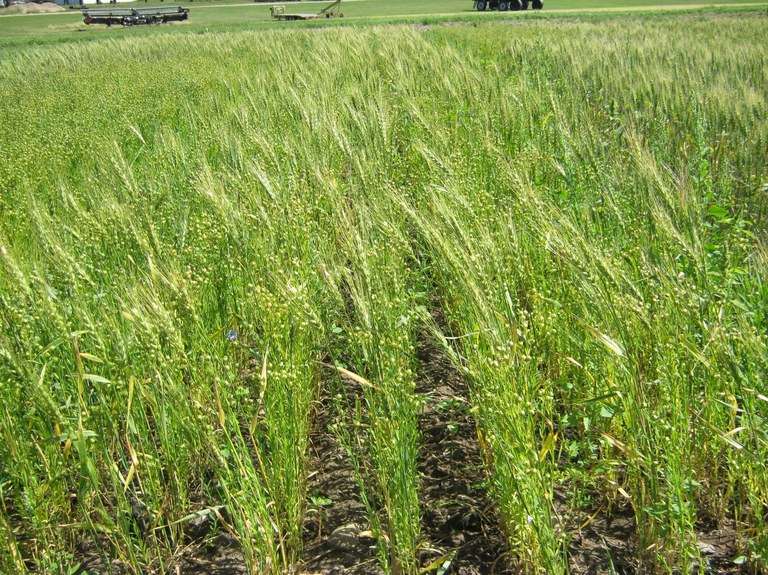Intercropping Wheat and Flax in an Organic Production System
Intercropping is the practice of growing two or more crops together at the same time in the same field. The idea is to find combinations of plants that complement each other or perform better together than when planted alone.
Intercropping may have positive or negative effects on yield and quality compared to mono-cropping. Organic flax yields are generally low, mainly due to weeds, as flax is a poor competitor. Intercropping wheat and flax in an organic system can aid in suppressing weed competition by providing greater plant density. Important considerations for intercropping include: proper seeding rate/plant density for each component of the mix, and variety selection to match maturity dates.
A field trial to examine organic intercropping of wheat and flax was conducted this past year at the CREC. The trial was featured at the CREC virtual field day and can be viewed at this link. https://www.youtube.com/watch?v=IATO9z8Dj3k
 Wheat flax intercrop on June 8, 2020.
Wheat flax intercrop on June 8, 2020.
The sole seeding rates used in the trial were 1.6 million seeds/ac wheat and 55 lbs. PLS/ac flax. The intercrop treatments were planted at 2/3 the sole rate or 1 million seeds/ac wheat and 37 lbs. PLS/ac flax. Two varieties of wheat, FBD Dylan and Glenn, and two varieties of flax, Omega and ND Hammond, were used. The trial was sown May 18 on ground that was previously a cover crop of rye, crimson clover, lentils, and turnips. Wheat and flax were sown in the same row together with a row spacing of 7”. Stand counts were taken on June 2 to determine plant densities of rates used. The trial was swathed on August 13 and harvested on August 20.
Performance of each crop component are presented in tables 1 & 2. Yield levels for both wheat and flax were low due to the warm dry conditions experienced this past growing season. The stress the trial had is demonstrated by the early heading/bloom dates along with short plant heights.
Intercropped wheat yields were 50-62 % of the check or sole wheat. Intercropped flax yields were 68-75% of the check or sole flax. Wheat quality was lower when grown as an intercrop. Test weights of wheat were decreased by as much 2 lbs/bu with grain protein seeing a similar trend of lower protein when grown with flax.


 Wheat flax intercrop on July 22, 2020.
Wheat flax intercrop on July 22, 2020.
Crop component yields and Land Equivalent Ratio are presented in table 3. Land Equivalent Ratio (LER) is a measure of the amount of land it would take to achieve equal yields of the intercrop as compared to growing the crops sole. If the LER is greater than 1.0, overyielding occurred and the intercrop is more productive then growing either of the crops alone. LER for all intercrop treatments ranged from 1.17 to 1.36, meaning it would take 17 to 36% more land to equal the intercrop yield if each crop was grown alone. Results gathered also demonstrate that when ND Hammond flax was used in the intercrop over yielding was greater than the Omega intercrop.
Steve Zwinger
Steve.Zwinger@ndsu.edu
Agronomy Research Specialist


